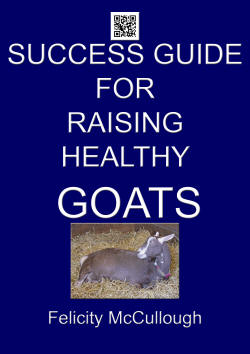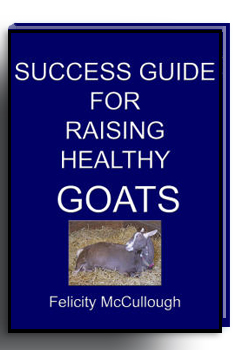Boar Goats
Blog about Goats
Cheese Making Goat
Christmas Goats
Cooking Goat
Diseases of Goats
Goat Basics
Goat Books
Goat Character
Goat Fun
Goat Giving Birth Video
Goats Home
Goat Humour
Goat Island
Goat Knowledge
Goat Links
Goat Lotions
Goat Poetry
Goat Soap
Goat Songs
Goat Stories
Goat Transgenics
Goat Viruses
How to Raise Goats
India Goat Farming
Milking Goats
Nigerian Dwarf Goat
Nimbkar Boar Goat
Raising Goats
Reproduction
Software Goat Recording
Spider Goats
Videos Goats
Weighing Goats
The nature and charachter of goats are well describe in this extract from "Sketches and Anecdotes of Animal Life" by the Reverend John George Wood MA, F.L.S. author of the "Illustrated Natural History" with illustrations by Harrison Weir, Third Edition, published by George Routledge and Co in 1856.
"There are two genera of animals so similar in their characteristics, that for many years they were treated as one genus. These are• Capra,” and Ovis,” the one including the goats, and the other the sheep.
There are some goats that look so like sheep, and some sheep that look so like goats, that the boundary line was formerly not very clearly distinguished. There are now, however, a number of distinctions discovered, which it would be useless to numerate, and the two genera are rendered perfectly distinct.
One of the principal differences between the two genera is, that the males of the goat kind are odorous, while those of the sheep possess no odour at all. But the chief distinctions are moral.
Both goats and sheep, when in a wild state, are remarkable for their activity, but the goats far surpass the sheep in this respect. Their sure footedness on elevated pinnacles of rock is as singular as the agility which enables the goats to reach them.
Frequently will a goat dash at a perpendicular face of rock the side of which appears perfectly smooth, and springing from point to point, will take advantage of the smallest projection, until it reaches the summit in safety.
Sometimes it is seen perched upon the extreme apex of a rocky peak, where there appears to be hardly room for the four little feet that are drawn so closely together. Sometimes the animal appears as if stuck in some wonderful manner against the side of a rock, and, were it not that the animal jumps about with perfect ease, it might be supposed to be nailed there, for no supports for its feet are perceptible.
Some of the goats are very useful to mankind. The celebrated Cashmere shawls are made of the long silky hair of the Tibetan goat. There was once an idea of naturalizing that goat in England for the purpose of shawl manufacture, but it was thought that such goats furnished so little wool, that the expense would have been greater than the gain, especially as the carcass is worthless.
The same may be said of the Llama. Moreover, the wool of the Tibet goat would certainly have deteriorated by the change to another climate.
In many countries, large flocks of goats are kept, but in England the goat is generally seen in stable yards. A few are kept for the sake of their milk, but in general goats are not to be found save in stable yards and at watering places, in which latter localities they come out in great force, being ribbon—decked as to their horns, and scarlet—robed as to their persons, much to the delight of the juvenility who ride in the miniature carriages to which they are harnessed.
The goat can be rendered very tame, but is always rather apt to give rather a severe blow with its horns in pure play. The kids are very pretty little creatures, as playful as kittens, and quite as graceful in their way. The domesticated goat seems to care little for a dog, but lowers its head if it apprehends an attack, and assumes so determined an air, that few dogs will attack it, and those who venture, generally receive so severe a blow that they are rolled, over and over in the mud, and run howling away.
A goat seems to hurl itself at a dog, not by making a headlong rush as a sheep does, but by rising on its hind legs, and throwing itself head foremost at its adversary.
The female goat is a very agreeable animal, and so are the kids of both sexes, but when a male kid begins to advance in years, he is by no means so pleasant. In the first place, he gives forth a powerful odour, which is supposed by grooms to be beneficial to horses, but is, to say the least, very disagreeable to men; and, in the second place, when he begins to feel his strength he is much too fond of using it, particularly if he is rather stronger and larger than the generality of his kind.
The he—goat is a most powerful animal for its size, and sometimes presumes on its strength in a most extraordinary manner, tyrannising over every weaker animal in its way, and not infrequently boldly opposing even full—grown men.
Of such a nature was the great overgrown goat, of whose exploits William Howilt speaks so feelingly. This ferocious animal was the dread of the whole neighbourhood, particularly when it happened to break bounds, and chose to play its pranks in the village.
On one of these occasions, it was seen marching gravely down the village street, which was immediately deserted by all the passengers, except a poor old woman, who was too feeble to get out of his way. Of course, the goat immediately charged at her, and knocked her down
The whole population was, of course, greatly excited. The tailor shook his sleeve board at the formidable goat, the blacksmith wished he had his big hammer at the goat’s head, but as the relator of the anecdote wickedly remarks, never offered to take it there, all agreed that the brute ought not be allowed to injure an old woman, but no one liked to attack him. At last, one, more courageous than the rest, armed himself with a heavy pole, and dealt the foe such a blow, as would most certainly have condemned to be shot.
Far different was the conduct of a beautiful Angora goat, whose acquaintance I made during my childhood. The goat was as tame and gentle as a dog, and would follow its friends about the garden, asking, as plainly as eyes could ask, for the handful of corn which generally fell to its share, It died long ago, and its stuffed skin is now in the Ashmolean Museum, at Oxford."

American Dairy Goat Association
American Goat Society
British Goat Society
Dairy Goat Society of Australia
DEFRA UK
National Pygmy Goat Association
Pygmy Goat Club
Welfare of Goats During Transport
www.goatlapshop.com © Copyright, Privacy Terms & Conditions contact@goatlapshop.com
Updated 6 March 2022 ©
